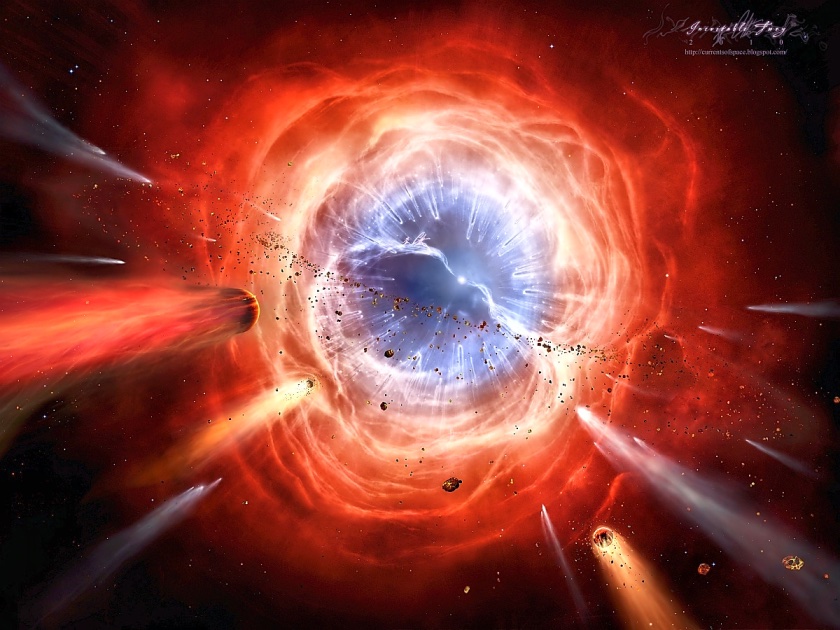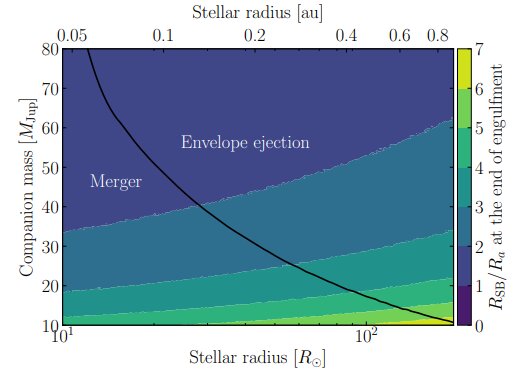As tragic as it is, engulfment of a planetary object by its stellar parent is a common scenario throughout the universe. But it doesn’t have to end in doom. A team of astrophysicists have used computer simulations to discover that planets can not only survive when their star eats them, but they can also drive its future evolution.
Models of the formation of planetary systems have shown that many planets often end up being consumed by their parent star. It’s simply a matter of orbital dynamics. Random interactions among newly forming planets and the protoplanetary disk that surrounds a young star can send planets on chaotic trajectories. Some of those trajectories end up driving the planet out of the system altogether, while other trajectories send them hurdling into the star.

Another chance for engulfment happens near the end of a star’s life when it becomes a red giant. This too affects the gravitational dynamics of the system and can send some large planets into the atmosphere of its parent star.
But surprisingly the planet doesn’t always die when this happens. Astronomers have found many odd systems throughout the galaxy that indicate that planets have survived their journey into the star. For example, there are white dwarf systems orbited very closely by a giant planet, too close for that planet to have formed naturally. There are stars with a surprising amount of heavier metals in their atmospheres, a sign that a rocky object has plunged into it. And there are stars that are rotating far too quickly, their spin rate amplified by an infalling planet.
All of these systems might be the result of planetary engulfment with the planet affecting the further evolution of the star. But can a planet really survive in the intense atmosphere of a star? A team of astrophysicists set out to tackle that question using computer simulations of the interior of a star, tracking the evolution and fate of various kinds of planets that might fall into it. In their simulations they studied planets of various masses and also brown dwarfs. Their simulations bolster the idea that planets can survive engulfment.

For example, in some cases the planet can live for thousands of years, swirling around the center of the star within its atmosphere. This orbital action can fling off material from the star, thinning out the outer edges of the atmosphere. In other cases the exchange of orbital energy drives up the temperature of the stellar atmosphere, making it appear much brighter than it normally would.

But in order to survive engulfment the planet itself must be relatively large, at least the mass of Jupiter. Small planets like the Earth cannot last long in those conditions. But if the planet is big enough and depending on the precise evolution, the planet can survive its passage through the star and in fact accelerate the evolution of the star so that it ends its life quickly, freeing the planet from its deadly embrace.
Source: universetoday.com








